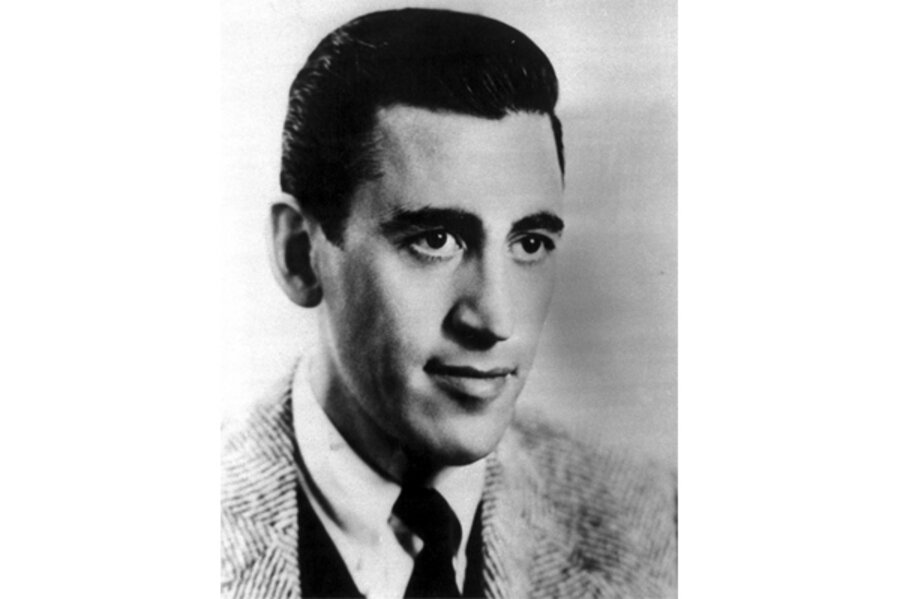J.D. Salinger: New England residents swap tales about encounters with the author
Loading...
Author J.D. Salinger hid away for decades in plain sight in Cornish, N.H., a feeding town for the high school where I taught English in Vermont for 25 years.
As such, I had access to all kinds of folklore and harmless gossip about the reclusive writer for years.
One of my students was his next-door neighbor and used to go over to his house every night and watch "Jeopardy!" with him, a game show which apparently Saliinger "loved."
She told me that on Halloween, Salinger would not give out candy. Instead he handed out pencils. This must have been a huge disappointment to sugarized kids, but if their parents had an ounce of literary sense, they would have realized their child had just been given the equivalent of Excaliber by King Arthur himself.
A pencil from Salinger! Imagine what that would bring on "Antiques Roadshow." Or better, imagine how it might energize a fledgling writer, perhaps King Arthur's intent?
Rumor had it that Salinger's second wife (who was half his age) volunteered in our school for years, but I was too polite to try to find out, although other teachers confirmed it. Privacy is privacy, after all.
One of my students was running a cash register at Price Chopper (or a similar grocery store five minutes from my school) in West Lebanon, N.H. one day and noticed that the white-haired man behind the middle-aged woman at the register looked just like J.D. Salinger.
When the woman handed her a credit card with the last name Salinger, my student flashed the woman a look, and the woman flashed her a look back which said, "That's him, yes, but don't say anything."
For years, one of my colleagues and his wife would attend local church suppers. J.D. Salinger loved church suppers and was always first in line at them. My colleague and his wife would often eat with him but learned from observation that he would get up and leave if anyone approached him about his identity as a writer. He wanted to be "just Jerry," not J.D. Salinger.
In later years, after infirmity set in, Jerry would still be first in line at church suppers, but he would stand there using a ski pole as a cane to steady himself. That's snow country class.
I know of one exception to this rule of public anonymity: Another one of my colleagues was the son of one of the owner's of Lou's, a famous Dartmouth breakfast joint in Hanover, where Salinger (and Robert Frost!) ate regularly.
One day, he asked Jerry if he would sign a copy of "The Catcher in the Rye" for his son (now my colleague), and Jerry complied. That signature on "Catcher" today is worth $10,000, according to a recent estimate.
Another one of my students had an aunt who bought the home owned by J. D. Salinger in his first marriage. The aunt describes a tunnel between the house and the garage which Jerry had built "to avoid journalists" and paparazzi. At one point in his career, a national magazine sent a photographer to stake him out until he got Salinger's photo. After three days, he got it, not at his tunnel-equipped home, but at the Windsor post office.
Another one of my colleagues has a brother who is a local mechanic and repaired "Jerry's" car for years. He too asserts it was "just Jerry."
Perhaps most fascinating, for me, is the story of a local N.H. volunteer firefighter, a story which adds credence to the report that, beginning in 2015, five more Salinger manuscripts will be published by the estate of "just Jerry."
The fireman recounts that one day, his department was called to put out a fire at the Salingers' Cornish home. The fire was in the basement where Salinger had his study and at one end of the study was a wall safe.
Salinger was so grateful that the fire had been extinguished without destroying his study that the next day he appeared at the volunteer fire company and handed them "a check for $18,000," said the firefighter.
The firefighter looked at me and said, "There was something in that safe he was very grateful we saved." And then he added, in case I didn't get it, "Manuscripts."
What his authority was for such a conjecture, I know not.
But I trust local gossip. Especially when it's just about Jerry.
Paul Keane, M.A.,M.Div.,M.Ed, is a Monitor contributor and blogs at The Anti-Yale.





